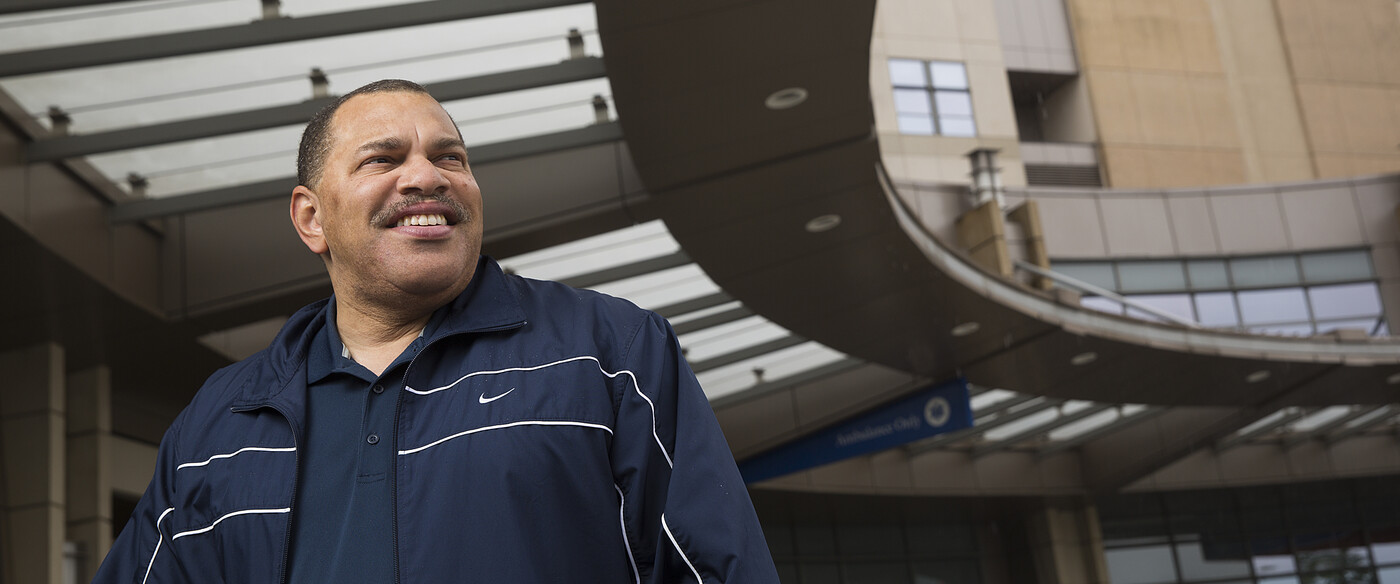Aaron Thompson knew something was seriously wrong when he woke up December 20, 2013. He credits Duke Life Flight for getting him to Duke University Hospital in the nick of time. “I was in the right place at the right time, with the right people,” he said. “They saved my life.”
In Good Hands
A sharp pain in the upper section of Aaron Thompson’s chest was the first sign that something wasn’t right. “It was extremely painful,” Thompson said. The pain didn’t seem to be coming from his heart, but he knew it was serious “because I couldn’t move.”
Local emergency medical service (EMS) transported Thompson from his Hillsborough home to Duke Regional Hospital. There, emergency room doctors quickly diagnosed Thompson with an aortic aneurysm. The bulge that develops in the body’s largest artery can be fatal if it ruptures, and Thompson’s was about to. He needed to be transported to Duke University Hospital immediately, where heart surgeons who specialize in repairing the aorta were prepping for his surgery.
“I was conscious and taking all this in,” recalled Thompson, now 54. “I was slowly starting to freak out. My anxiety was growing worse by the second. I’d never had anything like this happen to me.”
Thompson credits the staff of Duke’s critical care transport service, Duke Life Flight, for calming him down. “They were so jovial with me. They were monitoring me and I could hear the sirens coming from the truck, but my anxiety level dropped. I felt like I was in good hands.”
Celebrating 30 Years of Service
Duke Life Flight became the first hospital-based helicopter service in North Carolina in 1985. Since then, it has grown to include two helicopters and seven ground ambulances that transport more than 5,000 patients annually, and cover urban and rural areas throughout North Carolina, parts of Virginia, Tennessee and South Carolina.
The helicopter and ambulances are equipped with the latest technology, and staffed by highly trained nurses and emergency medical technicians (EMTs) who administer critical care when, as in Thompson’s case, every minute counts.
"We have seen miracles, watching patients from where we picked them up to seeing them walk out of the hospital," said Barbara Willis, clinical operations director of Duke Life Flight. Sometimes “they talk to the team, sharing their story and telling us how appreciative they are. "
They Were My Angels
Thompson was eager to thank his Life Flight team once he had recovered. “I didn’t find out until later how bad this was and what could have happened if my aorta had ruptured in the critical care unit. But they knew what they were up against.”
When Thompson addressed the Life Flight staff, he remembers asking whoever was in the truck that day to please stand up. “I applauded them. I got the chance to hug those people. It was an emotional day. I’m not here because I’m a Duke employee, or because I had seen some of them over the years when I was a security officer. I was in good hands. They were my angels.”
Today, Thompson proudly displays the Duke Life Flight pin on his lapel. When people ask him if he’s a member of their team he says, “no, but I support their work. I’m here because of them.”





